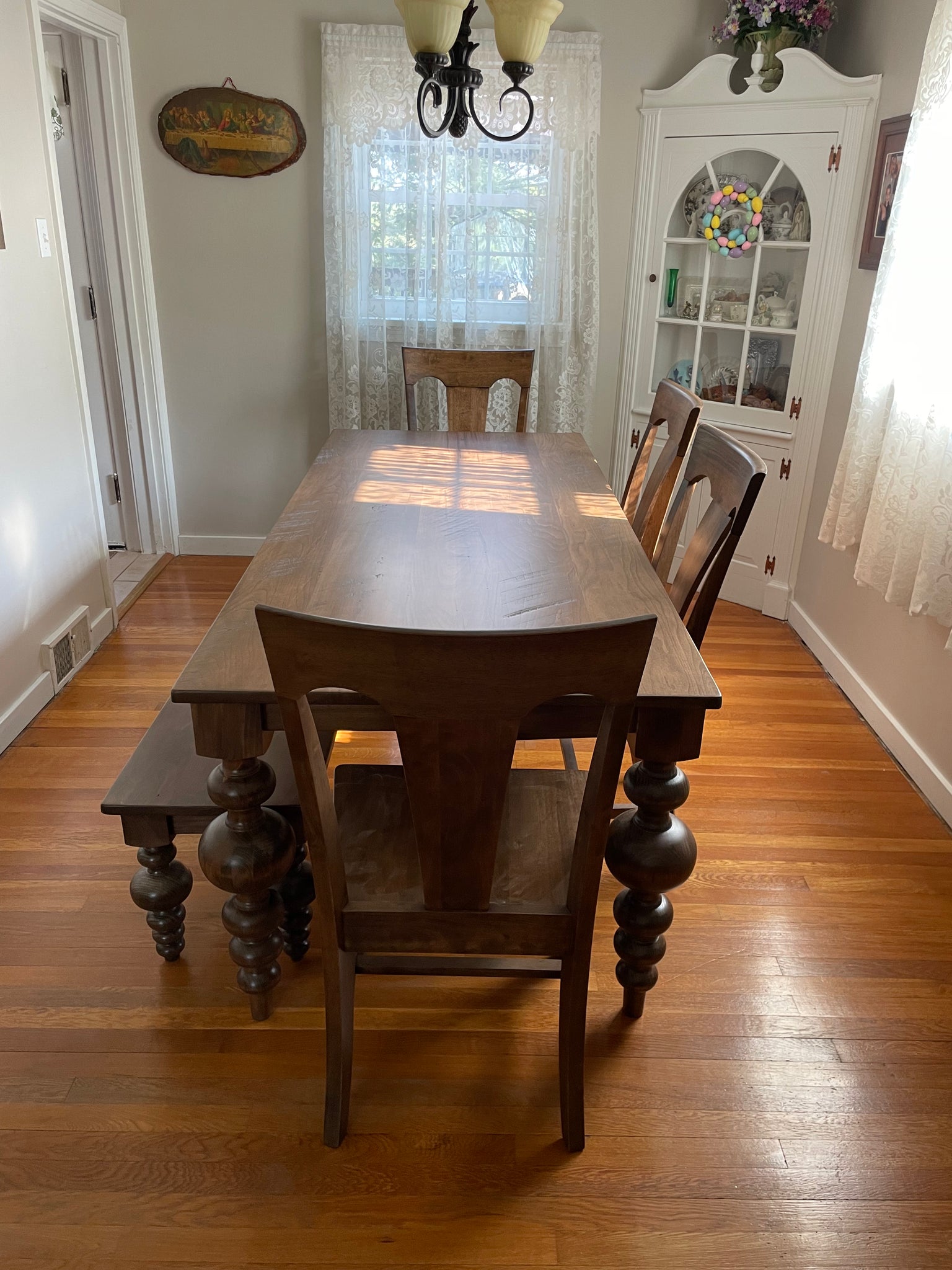Dining Room Table Legs That Integrate Performance and Modern Design
Wiki Article
An In-depth Consider Table Leg Styles: Locating the Perfect Match
Selecting the right eating table leg design is crucial for both visual allure and sensible performance. Traditional 4 legs use ageless elegance and security, while the pedestal base provides boosted legroom and a contemporary look. For those with bigger tables, trestle legs ensure strong support, whereas barrette legs introduce a mid-century modern ambiance with their minimalist layout. The x-shaped legs mix contemporary design with boosted security. Each of these options brings one-of-a-kind advantages, making the choice greater than simply an issue of preference. Check out further to uncover which style flawlessly enhances your dining room and lifestyle.Traditional Four Legs
Amongst the numerous kinds of eating table leg styles, the conventional four-leg design remains a timeless selection for several houses. 4 legs supply balanced assistance, guaranteeing the table remains stable and qualified of birthing considerable weight (dining room table legs).From a visual perspective, the typical four-leg layout can be quickly adapted to various indoor designs. Whether crafted from wood, metal, or a mix of materials, these legs can be intricately sculpted, streamlined and minimalistic, or anything in between. Their convenience permits them to match both rustic and contemporary setups perfectly.
Furthermore, the uncomplicated framework of the four-leg style helps with ease of motion and placement within an area. Unlike more complex bases, this style lessens obstructions, giving adequate legroom for diners. In recap, the traditional four-leg table leg style marries withstanding elegance with sensible performance, making it an astute selection for those seeking both kind and function in their eating furnishings.
Stand Base
Commonly celebrated for its stylish and space-efficient layout, the stand base is a distinguished option to the standard four-leg arrangement in dining table leg styles. Without corner legs, diners are paid for better liberty of movement, making it a suitable selection for round and oval tables that promote even more intimate and comprehensive celebrations.In addition, the pedestal base's central support can deal with considerable weight, enabling making use of much heavier table tops, such as marble or thick wood. This strength coupled with its aesthetic versatility makes the stand base a prominent option in both typical and modern indoor setups. It can perfectly incorporate with numerous design themes, from classic elegance to minimalist modernity. Additionally, the central column itself provides a canvas for elaborate designs and artistic expressions, including a component of aesthetic passion beneath the table. In recap, the stand base incorporates performance snappy, making it a refined and sensible alternative for diverse eating settings.
Trestle Legs
Trestle legs give a robust and timeless foundation for eating tables, identified by their straight cross-bracing and strong support light beams. Stemming from middle ages times, this design has actually evolved yet maintained its vital structure, making it a seasonal favorite in both traditional and modern settings. The central trestle light beam, typically sustained by two or more upright messages, supplies extraordinary security, enabling for bigger table lengths without the requirement for added legs.A considerable benefit of trestle leg tables is the sufficient legroom they provide. Unlike tables with 4 corner legs, the absence of blockages at the table's sides offers unobstructed room for chairs and restaurants, enhancing comfort and accessibility. This makes trestle tables suitable for accommodating bigger celebrations, whether in a dining-room or a reception hall.
From rustic farmhouse to streamlined contemporary layouts, trestle legs can be tailored to match specific preferences. Their long-lasting allure and functional advantages make trestle legs an engaging option for those looking for both design and functionality in their dining table.
Hairpin Legs

The appeal of barrette legs hinges on their simplicity and adaptability - dining room table legs. Available in a variety of products, consisting of steel and brass, they can be completed in numerous colors to match various interior styles. Whether coupled with a rustic wooden tabletop or a contemporary glass surface area, barrette legs easily blend performance with a touch of vintage beauty
Sturdiness is an additional notable feature of hairpin legs. In spite of their fragile appearance, these legs are crafted to birth significant weight, ensuring the table stays steady and safe. Additionally, they are reasonably easy to install, making them a popular choice for DIY lovers and specialist furniture makers alike.
X-Shaped Legs

Constructed from products such as steel, wood, or a mix of both, X-shaped legs can be customized to match different style choices. Steel legs usually offer a smooth and industrial feeling, ideal for loft-style homes and modern eating areas.
In addition, the design behind X-shaped legs guarantees even weight distribution, lessening the risk of tottering and boosting toughness. This makes them specifically well-suited for larger table that need additional support. In significance, X-shaped legs blend practical design get more with modern aesthetic appeals, making them a timeless choice for diverse dining atmospheres.
Verdict
A comprehensive understanding of eating table leg designs reveals the distinctive characteristics and advantages of each design. Traditional four legs offer stability and ageless appeal, while stand bases give legroom and a streamlined appearance. Trestle legs ensure durable support address for bigger tables, and barrette legs present a mid-century modern visual. X-shaped legs integrate modern style with enhanced security. Picking the ideal leg style ensures both useful and aesthetic fulfillment in any type of dining room.Report this wiki page